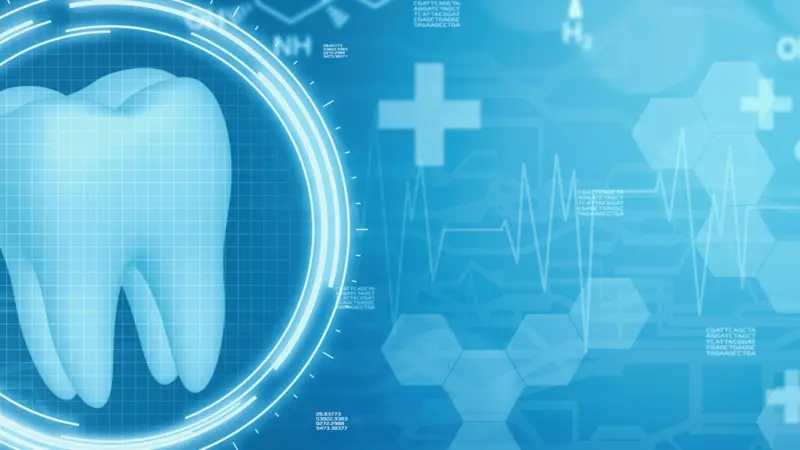

Integrative Health and Wellness

Integrative Health and Wellness
Oral Medicine – Dental Toxicology: An Introduction to Biological Dentistry
In using the term biological dentistry, we are not attempting to stake out a new specialty for dentistry but rather to describe a philosophy that can apply to all facets of dental practice and to health care in general: Always seek the safest, least toxic way to accomplish the mission of treatment, all the goals of modern dentistry, and do it while treading as lightly as possible on the patient’s biological terrain. A more biocompatible approach to oral health is the hallmark of biological dentistry.
By making distinctions – some obvious, and some subtle – among the available materials and procedures, we can reduce the impact on our patients’ biological responses. Our sense of duty to advocate for the well-being of our patients should make biocompatibility a high priority, and the fact that there are now so many new ways to make dentistry work better gives us the opportunity to do just that.
The International Academy of Oral Medicine and Toxicology (IAOMT) is an organization for that group of dentists, physicians, and allied researchers who consider biocompatibility to be their first concern and who demand scientific evidence as their key criterion. Members of this group have, since 1984, examined, chronicled, and supported research into the distinctions that can make dental practice more biologically acceptable. This “biological dentistry” attitude can inform and intersect with all topics of conversation in health care where the well-being of the mouth is an integral part of the health of the whole person.
Dental Mercury
Scientific evidence has established beyond any doubt two propositions: 1) Amalgam releases mercury in significant quantities, creating measurable exposures in people with fillings, and 2) Chronic exposure to mercury in the quantity released by amalgam increases the risk of physiological harm.
Dentists who engage in elective replacement of amalgam fillings have been criticized by their peers for unnecessarily exposing their patients to additional mercury during the process of grinding the old fillings out. Yet, the “mercury-free” dentists are the ones who are most aware of the problem. We present scientifically verified procedures for greatly reducing and minimizing mercury exposure which all dental office personnel should learn and follow for their own protection and for the protection of their patients.
Additionally, wastewater authorities around the world are on to dentists. Dental offices have been collectively identified as the major source of mercury pollution in municipal wastewater, and they’re not buying the excuse that amalgam is stable and doesn’t break down. Regulatory action is in place in many jurisdictions requiring dental offices to install mercury separators on their waste water lines. The IAOMT has examined the environmental impact of dental mercury since 1984 and continues to do so now.
Clinical Nutrition and Heavy Metal Detoxification for Biological Dentistry
Nutritional status impacts all aspects of a patient’s ability to heal. Biological detoxification depends heavily on nutritional support, as does periodontal therapy or any wound healing. While the IAOMT does not advocate that dentists necessarily become nutritional therapists themselves, an appreciation of the impact of nutrition on all phases of dentistry is essential to biological dentistry. Thus, all members should be familiar with the methods and challenges of reducing systemic toxicity deriving from mercury exposure.
Biocompatibility and Oral Galvanism
In addition to using dental materials that are less overtly toxic, we can raise the biocompatibility quotient of our practice by recognizing the fact that individuals vary in their biochemical and immunological responses. The IAOMT discusses biochemical individuality and sound methods of immunological testing to help determine the least reactive materials to use with each individual patient. The more a patient suffers from allergies, environmental sensitivity, or autoimmune diseases, the more important this service becomes. Aside from their power to provoke immune reactivity, metals are also electrically active. Oral galvanism has been talked about for well over 100 years, but dentists generally ignore it and its implications.
Fluoride
Mainstream public health science has failed to verify that a protective effect of water fluoridation on children’s teeth actually exists, despite the constant public relations statements and resulting widespread belief among the general population. Meanwhile, evidence of the harmful effects of fluoride accumulation in the human body continues to mount. The IAOMT has worked and will continue to work to offer updated appraisals of the risks of fluoride exposure based on scientific findings and even regulatory documents.
Biological Periodontal Therapy
At times it almost seems as if a tooth with its root canal system and leaky gums is a device for injecting pathogens into internal spaces where they don’t belong. The IAOMT offers resources that revisit the dentinal tubule and the periodontal pocket from the perspective of biological dentistry. Methods used to detect pathogens and monitor their numbers through the course of treatment range from the basic clinical exam to the classic use of a phase contrast microscope to the BANA test and DNA probes. There are non-drug procedures for eliminating the infection, as well as occasional judicious use of anti-microbial drugs. Laser treatment, ozone treatment, home care training in pocket irrigation, and nutritional support are all relevant to the IAOMT’s discussions about biological periodontal therapy.
Root Canals
There is controversy once again in the public’s consciousness over root canal treatment. The origin lies in the question of remnant populations of microbes in the dentinal tubules and whether or not endodontic techniques adequately disinfect them or keep them disinfected. The IAOMT works to examine how those bacteria and fungal organisms can turn anaerobic and produce highly toxic waste products that diffuse out of the tooth, through the cementum, and into circulation.
Jawbone Osteonecrosis
Recent work in the field of facial pain syndromes and Neuralgia Inducing Cavitational Osteonecrosis (NICO) has led to the realization that the jawbones are a frequent site of ischemic osteonecrosis, also known as aseptic necrosis, the same as is found in the femoral head. As a result, many extraction sites that appear to have healed have actually not healed completely and can trigger pain in other parts of the face, head, and distant parts of the body. Even though most of these sites actually present with no symptoms at all, pathological examination reveals a combination of dead bone and slowly growing anaerobic pathogens in a soup of highly toxic waste products where we would otherwise think there has been good healing.
Twenty-First Century Dentistry
In the old days, when the only restorative materials were amalgam or gold and the only aesthetic material was denture teeth, our profession was hard put to fulfill its mission and be biologically discriminating at the same time. Today, we can do better dentistry, in a less toxic, more individualized, more environmentally friendly way than ever. We have as many choices of attitude before us as we do techniques and materials. When a dentist chooses to put biocompatibility first, that dentist can look forward to practicing effective dentistry while knowing that patients are provided with the safest experience for their overall health.
REFERENCES
International Academy of Oral Medicine and Toxicology. (n.d.) Oral medicine – Dental toxicology: An introduction to biological dentistry. https://iaomt.org/intro-articles-biological-dentistry/


 By
By







